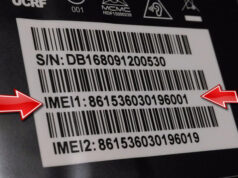You may have seen people organizing their data with bits and pieces of sticky notes, post-it notes, and Evernote notebooks. While these methods may be effective, they lack the ability to have one central location for all of your organization needs. After all, there is no single location for all of your notes; it is likely to be several different ones. A better alternative is to use a data catalog system.
You should always be on the lookout for ways to better manage your organization of data. With the advent of social media sites such as Facebook, MySpace and Twitter, you can now quickly find and share information about people, places and things across the globe. This new type of accessible information can be as simple as you posting a picture of your lunch to your profile on Facebook, or as complex as sharing a detailed analysis of an upcoming business meeting.
The Internet can be a fickle place, where your data can go missing in a moment’s time. Data catalogs are no different, where you can store all your data in one place so that it’s organized and easily accessible.
Organizations in today’s commercial environment have access to vast amounts of data. Before now, data owners had to spend a lot of time looking for and using data. Data-intensive companies now use data analytics to acquire a competitive advantage and obtain actionable insights for strategic decision-making.
Data catalogs make data use more efficient and effective. Furthermore, when a data catalog is implemented, data-centric enterprises may find and use data from large data assets. Data engineers at businesses that don’t have their own data catalogs have a hard time dealing with the complexities of data integration and data management. When the term “data catalog” is spoken, one of the first questions that comes up is “what is a data catalog?” Thankfully, we have a fact-based response to this issue.
Defined Data Catalog
A data catalog is an ordered inventory of data assets that enables data consumers to find, access, and evaluate data all in one location. Metadata is used in data catalogs to help data users quickly find, analyze, and utilise an organization’s data assets. Metadata, in particular, is critical for uncovering data that was not initially found in the data user’s search. This almost always results in a more fact-based data analysis. Curating and organizing data in a single platform can provide users with valuable insights.
Some high-end data catalogs now offer a wide range of compatibility across applications, clouds, platforms, and databases, thanks to technological improvements. Data catalogs can be used independently or in conjunction with an analytics platform. It can sync with an API as an independent entity to deliver a more consistent consumer experience.
Your text will be rewritten by QuillBot. Start by typing or pasting something into this box, then hit the enter key.
The Most Important Characteristics of a Data Catalogue
Many data catalogs now allow data cataloging to be automated. In any case, there are a few crucial features to look for in a data catalog system:
- Governance and Access Control: A robust data catalog is constructed to enable governance and access control in addition to its conventional capabilities. Self-service analytics and the dismantling of data silos are now possible. Data consumers will be able to create policies and processes in a centralized platform if they use a data catalog system in conjunction with a data governance solution. This will also help to solve data quality problems.
- Searchability is unquestionably one of the most important characteristics of a data catalog. A data catalog should also facilitate data discovery. Tags and filters should be permitted to help users narrow down their search.
- Metadata collection: Many data-intensive companies are migrating to multi-cloud solutions from on-premises systems. Data catalogs make it possible to integrate and curate data from a variety of sources, including data warehouses, databases, BI tools, and ETL. This functionality is critical for scalability of data access in a single location.
- Integrations with Artificial Intelligence: These technologies automate the tagging, organizing, and classification of data. They may also add context to an organization’s data assets at scale by using data usage and query results.
- Collaborative Capabilities: Non-technical people can discover and use data using an intuitive data catalog tool. This feature encourages the use of data across the company in a collaborative manner.
Using a Catalog to Organize Data

Using a catalog to organize data can be intimidating and overwhelming. The intricacies and features that data catalogs provide, for the most part, make it all the more difficult. Thankfully, we’ve put together a step-by-step tutorial to help you get started with the process:
- To find data files, tables, and databases, examine the metadata throughout the organization’s data assets. The metadata should then be incorporated into your data catalog.
- Create data profiles with data point descriptions. Data consumers will be able to find and comprehend data more quickly as a result of this.
- Create links inside the catalog based on data relationships across the organization’s databases. As a result, the query results are more reliable.
- Examine the data’s pedigree to see where it came from and what changes it went through to get to where it is now. This is crucial for resolving analytical issues.
- To organize data into the system, use procedures like tagging and sorting.
- To increase data security and mitigate data loss and breaches, incorporate data security methods.
Being a tech geek means you’re always on the lookout for a new and interesting new device, app, or piece of software. But you already have all this stuff. It’s all around you, waiting to be used. But for some reason you can’t find it. Why? Because it’s not organized. I’m talking about your data. Your data that you need to keep organized so that you can find it later, when you need it.. Read more about data catalog gartner and let us know what you think.
{“@context”:”https://schema.org”,”@type”:”FAQPage”,”mainEntity”:[{“@type”:”Question”,”name”:”What makes a good data catalog?”,”acceptedAnswer”:{“@type”:”Answer”,”text”:”
A good data catalog is one that is up to date, organized and contains all the information needed.”}},{“@type”:”Question”,”name”:”Why do we need data catalog?”,”acceptedAnswer”:{“@type”:”Answer”,”text”:”
The data catalog is a database of all the songs in Beat Saber.”}},{“@type”:”Question”,”name”:”What is data catalog example?”,”acceptedAnswer”:{“@type”:”Answer”,”text”:”
A data catalog is a list of all the information that can be found on an object.”}}]}
Frequently Asked Questions
What makes a good data catalog?
A good data catalog is one that is up to date, organized and contains all the information needed.
Why do we need data catalog?
The data catalog is a database of all the songs in Beat Saber.
What is data catalog example?
A data catalog is a list of all the information that can be found on an object.
Related Tags
This article broadly covered the following related topics:
- data catalog tools
- data catalog example
- what is a data catalog
- data catalog software
- data catalog



